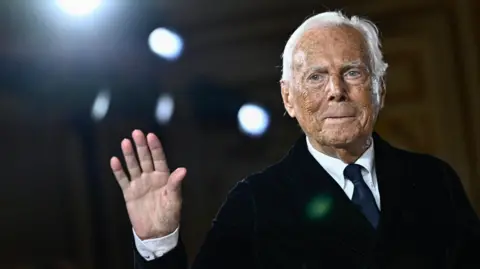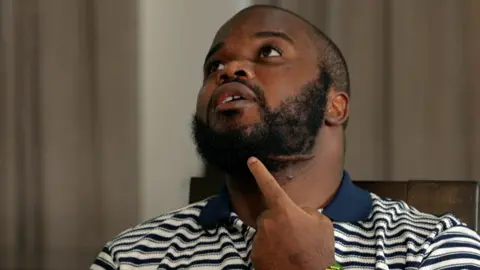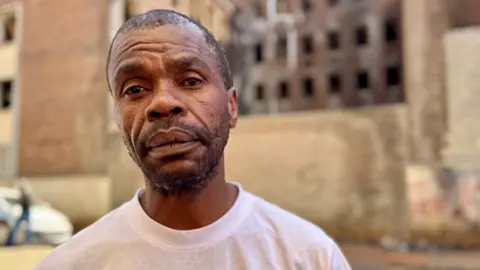In the annals of sports history, few figures resonate with the same depth of significance as Arthur Ashe, not merely for his groundbreaking achievements on the tennis courts but for his relentless struggle against racial discrimination and commitment to social justice. His stunning victory at Wimbledon fifty years ago set a precedent, marking him as the first black man to clinch the esteemed title. But as he would express throughout his life, this accolade was not the pinnacle of his existence. In a poignant BBC interview just a year before his death in 1993, he affirmed, "I don’t want to be remembered for having won Wimbledon... it’s not the most important thing in my life."
In the 1970s, his activism led him to South Africa—a country grappling with the oppressive grip of apartheid. Despite facing visa rejections due to his vocal opposition to the regime, Ashe eventually visited the nation in 1973 to participate in a tournament. He maintained a firm stance that he would only compete if the stadium could accommodate spectators of all races, a bold declaration that ignited mixed reactions both domestically and abroad. His arrival sparked enthusiasm among many black South Africans, who saw him as a symbol of hope. Mark Mathabane, a young boy from a marginalized township, recalled Ashe as "Sipho," a gift from God, revealing the deep admiration that transcended racial lines.
However, Ashe's journey in apartheid South Africa was not without its challenges. He faced intense criticism during his visit, particularly from those who believed he was inadvertently legitimizing the oppressive regime. This tension highlights the complex nature of his mission; while others protested from afar, Ashe sought first-hand knowledge to inform his activism.
After his 1973 visit, Ashe returned several times, ultimately creating the Arthur Ashe Soweto Tennis Centre, a facility aimed at nurturing future tennis stars. Although it faced challenges, including vandalism during the student uprisings of 1976, the center managed to reopen in 2007, revitalizing Ashe's dream of empowering youth through sport and education.
Beyond his athletic endeavors, Ashe became a vocal opponent of apartheid, supporting international sports boycotts and joining protests against the South African government. His partnership with luminaries like Harry Belafonte, through the Artists and Athletes Against Apartheid initiative, underscored his belief in using sport as a vehicle for change. Though he passed away before witnessing the end of apartheid, his enduring contributions are celebrated as catalysts for social change.
The legacy left by Arthur Ashe, now commemorated through events like the current Wimbledon exhibitions, serves as a poignant reminder of his dual identity as an athlete and advocate. His life continues to inspire countless individuals, proving that true greatness lies not just in personal achievement but in the courage to stand up for justice and equality. Underneath Ashe's accolades and achievements rests an unwavering spirit, one that taught future generations to envision a world where potential knows no bounds.
In the 1970s, his activism led him to South Africa—a country grappling with the oppressive grip of apartheid. Despite facing visa rejections due to his vocal opposition to the regime, Ashe eventually visited the nation in 1973 to participate in a tournament. He maintained a firm stance that he would only compete if the stadium could accommodate spectators of all races, a bold declaration that ignited mixed reactions both domestically and abroad. His arrival sparked enthusiasm among many black South Africans, who saw him as a symbol of hope. Mark Mathabane, a young boy from a marginalized township, recalled Ashe as "Sipho," a gift from God, revealing the deep admiration that transcended racial lines.
However, Ashe's journey in apartheid South Africa was not without its challenges. He faced intense criticism during his visit, particularly from those who believed he was inadvertently legitimizing the oppressive regime. This tension highlights the complex nature of his mission; while others protested from afar, Ashe sought first-hand knowledge to inform his activism.
After his 1973 visit, Ashe returned several times, ultimately creating the Arthur Ashe Soweto Tennis Centre, a facility aimed at nurturing future tennis stars. Although it faced challenges, including vandalism during the student uprisings of 1976, the center managed to reopen in 2007, revitalizing Ashe's dream of empowering youth through sport and education.
Beyond his athletic endeavors, Ashe became a vocal opponent of apartheid, supporting international sports boycotts and joining protests against the South African government. His partnership with luminaries like Harry Belafonte, through the Artists and Athletes Against Apartheid initiative, underscored his belief in using sport as a vehicle for change. Though he passed away before witnessing the end of apartheid, his enduring contributions are celebrated as catalysts for social change.
The legacy left by Arthur Ashe, now commemorated through events like the current Wimbledon exhibitions, serves as a poignant reminder of his dual identity as an athlete and advocate. His life continues to inspire countless individuals, proving that true greatness lies not just in personal achievement but in the courage to stand up for justice and equality. Underneath Ashe's accolades and achievements rests an unwavering spirit, one that taught future generations to envision a world where potential knows no bounds.





















